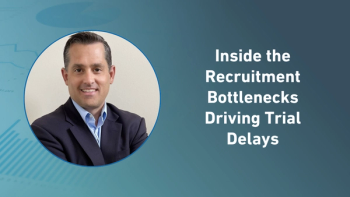
- Applied Clinical Trials-01-01-2009
- Volume 0
- Issue 0
Pathways to Patients
Regional recruitment managers are on the rise, providing a unique approach to onsite subject enrollment.
Wilmington, NC, based Inclinix—who refer to themselves as an enrollment CRO—is shirking the trend this economic season of downsizing. Instead, they recently increased their team of Regional Recruitment Managers (RRMs) 200%, from 25 to 75 people.
Jeff Bagshaw, senior vice president at InClinix, has spent the past 20 years working in industry.
Unlike Detroit made cars, RRMs are in demand. They also meet a need sponsors have been talking about for several years now, says Jeff Bagshaw, senior vice president at the company. That is, RRMs provide a unique approach to onsite subject enrollment.
"They put a face on our sponsor's study and create relationships with the study coordinator at the site," said Bagshaw. "If you're able to accomplish that, that opens doors"—doors to places like a hospital-run Lamaze class, where the RRM on one pre-labor study turned for potential study participants.
This type of outside-the-site recruitment strategizing and inside-the-site relationship building is what defines the role of RRMs, who when required—not all studies need them—are utilized as early as possible. In most cases, they're called upon for the more difficult to enroll studies—it all depends on the protocol.
Curriculum Vitae
Once brought onboard, the many duties of RRMs include assessing sites with what Bagshaw described as a "CRA's perspective," monitoring, teaching study coordinators the fine art of EDC, and educating them about the study, because an educated coordinator means an educated patient. "As [that] study coordinator goes through the consent process, it's a better educated patient," explained Bagshaw, "and that increases retention and compliance in a study."
Something else that's been increasing with the help of RRMs is recruitment times. It's four times faster at sites they helped identify, reports Bagshaw.
Mapping patients
Behind this success and what makes Inclinix different from patient recruitment companies on the scene, according to the vice president, is a focus on therapeutic pathways.
"No matter what disease state, there are pathways that people move through the health care system," said Bagshaw. And when sites need to look externally for patients, an RRM will identify their specific therapeutic pathways and go out into the world to meet them at what Bagshaw calls "intersection points"—places along the path of a patient's health care network.
Think back to the earlier reference to the Lamaze class. That's likely part of the health care network for a first-time pregnant woman. Another example is a city community center that offers cooking classes for diabetics. An RRM working on a diabetes study would visit the class and provide information about the study in an attempt to drive class members to the recruiting site.
As Bagshaw explained, "The most important thing is to understand the sort of health care network that patients move through." That requires RRMs to sometimes approach other physicians within the investigating doctor's network.
For example, if the doctor running the study is a knee specialist who is the go-to doc for a dozen general practitioners, an RRM would work within that network of doctors to get word out about the study.
This is also the case for large, multispecialty medical practices that serve as trial sites. RRMs can sort through the maze of patients and identify the ones who should be directed to the study's coordinator.
Regardless of where they find themselves, their goal is always the same: increase awareness of studies—and that starts at the site level, where as Bagshaw explained, "they bring the awareness of that study to a higher level so that everybody who touches that patient understands the protocol."
Meanwhile, back at the home office, training is ongoing. Another constant is communication, as RRMs share with each other best practices that they pick up either at sites or on their own.
Then it's on to doing what they're trained to do, whether it's in Germany or Florida: identifying and eliminating recruitment barriers.—Kerri Nelen
Articles in this issue
almost 17 years ago
What's Behind Clinical Trial Data?almost 17 years ago
Of Mice, Mountains, and Magmaalmost 17 years ago
eClinical Software: January 2009almost 17 years ago
Business and People Update January 2009almost 17 years ago
Pediatric Research in Germanyalmost 17 years ago
Imaging Biomarker Networkalmost 17 years ago
Burying Sites Under Safety Reportingalmost 17 years ago
Seeking Guidance on Rater Reliabilityalmost 17 years ago
Jumping on the eCTD Bandwagonalmost 17 years ago
FDA Faces Challenges and ChangesNewsletter
Stay current in clinical research with Applied Clinical Trials, providing expert insights, regulatory updates, and practical strategies for successful clinical trial design and execution.






.png)



.png)



.png)
.png)
